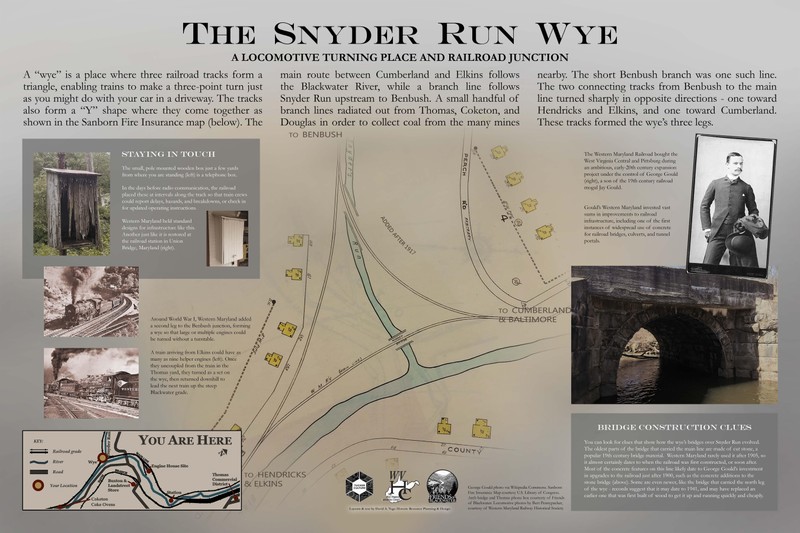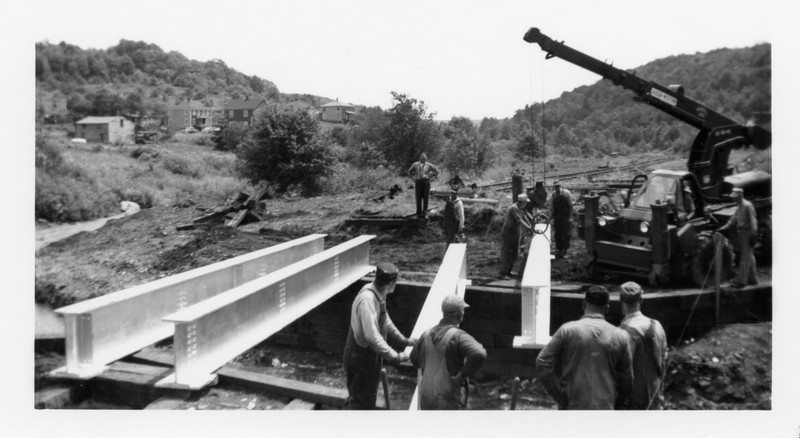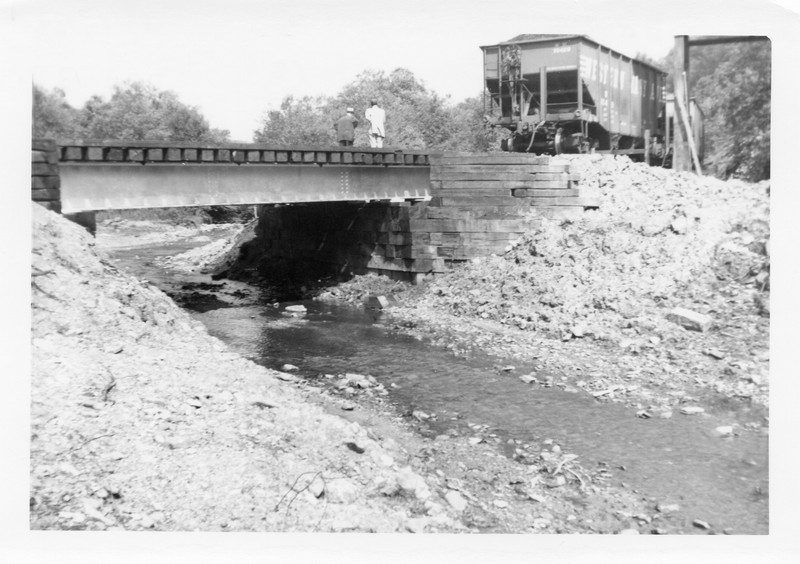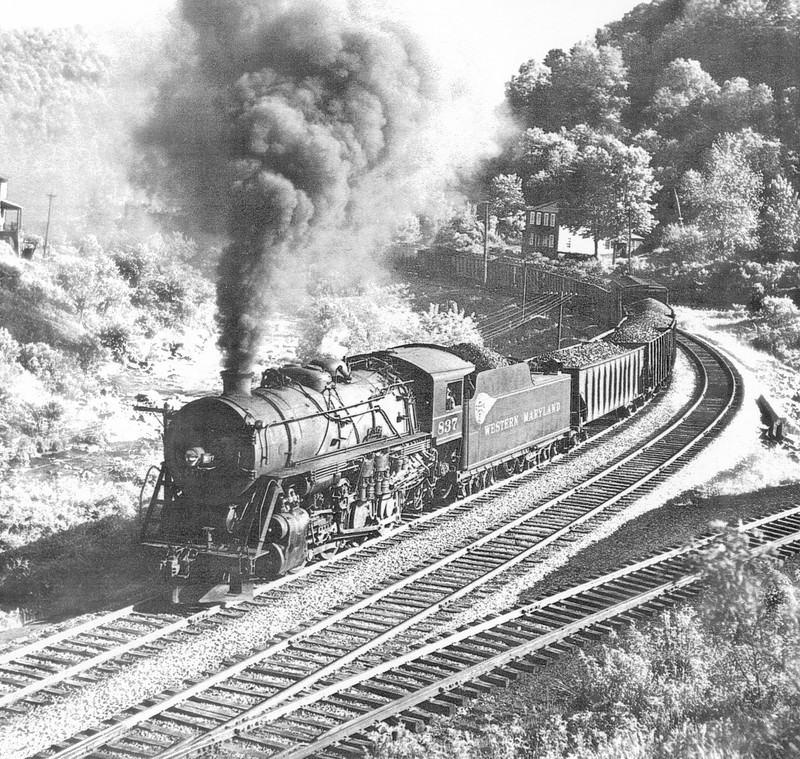The Snyder Run Wye
Introduction
Text-to-speech Audio
A "wye" is a place where three railroad tracks form a triangle, enabling trains to make a three-point turn. The tracks also form a “Y” shape where they come together as shown in the Sanborn Fire Insurance map. The main route followed the North Fork of the Blackwater between Cumberland and Elkins, while a branch line followed Snyder Run upstream to the town of Benbush. There is a call box mounted on a pole just before the wye. A small handful of branch lines radiated out of Thomas, Coketon, and Douglas in order to collect coal from the many mines nearby. The short Benbush branch was one such line. The two connecting tracks from Benbush to the main line turned sharply in opposite directions— one toward Hendricks and Elkins, and one toward Cumberland. These tracks form the wye’s three legs.
Images
sign of the Snyder Run Wye made by Friends of Blackwater

repairing the bridge over Snyder Run

bridge over Snyder Run

train crossing the Snyder Run Wye

Backstory and Context
Text-to-speech Audio
So the West Virginia Central & Pittsburg Railroad eventually became the Western Maryland just after the turn of the 20th century. Both companies operated with fairly intensive railroads; the pole train operation involved a lot of locomotives to bring pole cars uphill from Elkins so that they could continue on toward Cumberland, Baltimore, and Pittsburgh so the coal would be sent to market. But the grade of the Blackwater River was steep enough that the capacity of the coal-carrying proper cars grow in size over time, so did the locomotives but it typically worked out, the correlation was roughly equal, and for most of the early to mid-20th century, the capacity of a locomotive once it reaches the Blackwater grade, drops due to this. So a locomotive for every ten cars. That meant that a hundred car coal train might have up to ten locomotives pumping up the grade, there might be three locomotives on the front, four in the middle, three in the back; they did it that way to spread the power around so that the train didn’t bunch up— if it bunched up enough, it could bend like a snake and derail. So, a whole train would reach the top of the hill at Douglas, it would continue up here to the wye at Snyder Run; and a wye is a place where a train can basically make a three-point turn, the track actually forms what looks like the letter Y and actually looks like three Ys together where the train can pull in, back down, and then pull back out going back the way that it came. Now they didn’t typically back entire coal trains on this wye; when a single steam locomotive got to a terminal, the way a railroad would typically turn it around was on a turntable— what looked to be just a bridge in a circular pit that could aim the locomotive onto any track around the circumference. But when you’ve got nine locomotives at once, it would take a lot of time to uncouple each engine, put it on the turntable, and then go around. So, originally in Thomas, there was a turntable, but as the operation got into its own kind of groove here, it became pretty apparent that there might be a more efficient way to do things. So a coal train would come up here, they cut off all the [UNCLEAR] engines—engines that were extra to the main engine that was going to continue on with the train—and they would couple all the helper engines at once, back them up on the wye, and then turn them and send them back down to Hendricks where they repeated the same operation in Parsons. So every time a coal train came up with a whole group of helper engines, they came off, turned around on the wye, and went back down. It’s located here because the mouth of this creek, Snyder Run, forms a big triangular piece of land in what is otherwise a very narrow valley, it provides the space to form a wye. I think you can see it crosses the creek into places— the wye does— but that is a product of the local geography.
